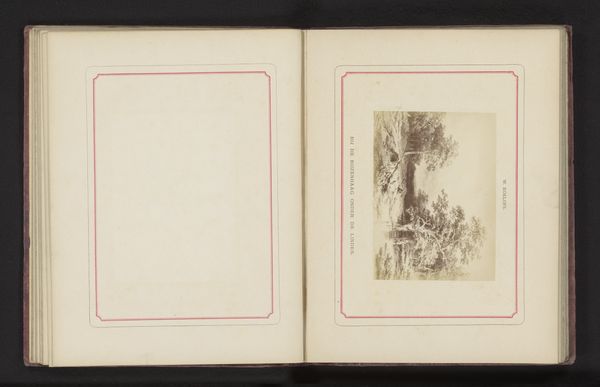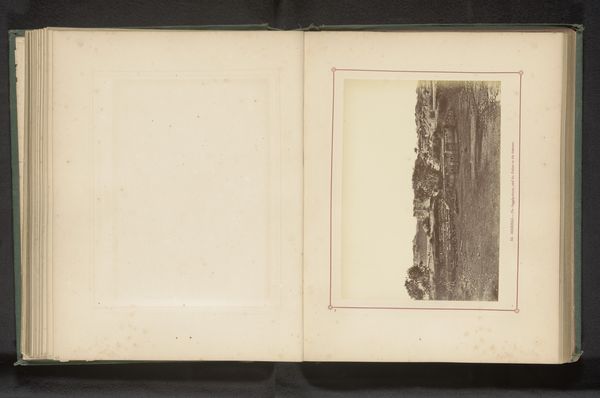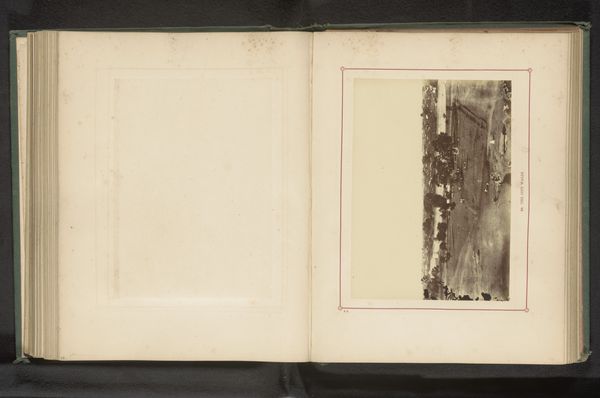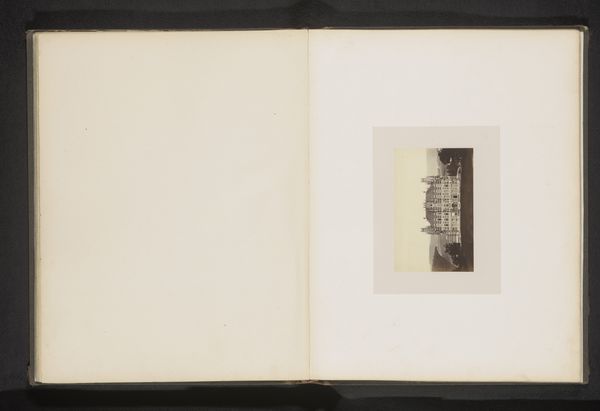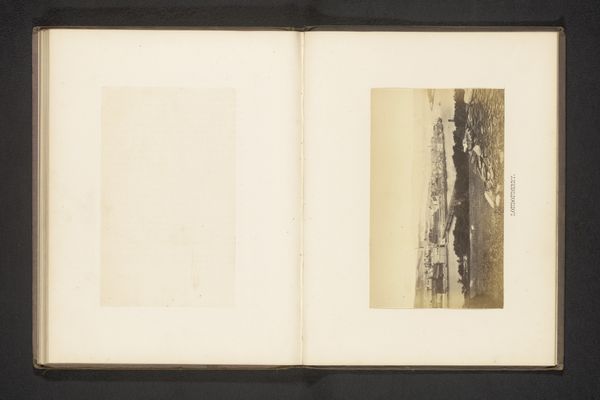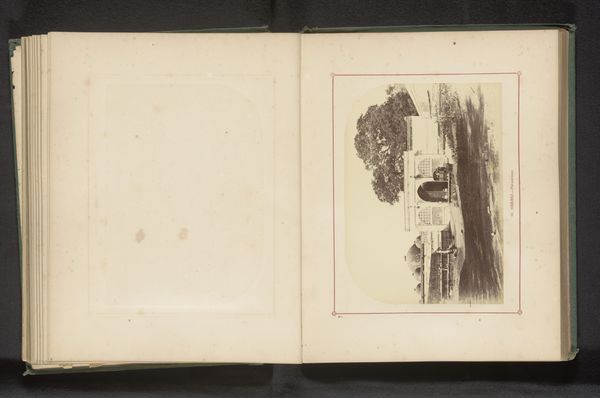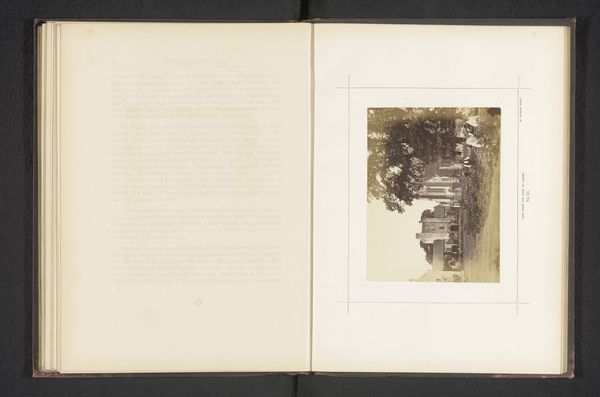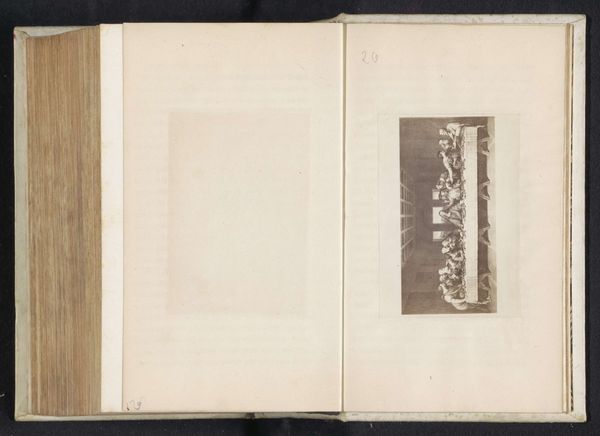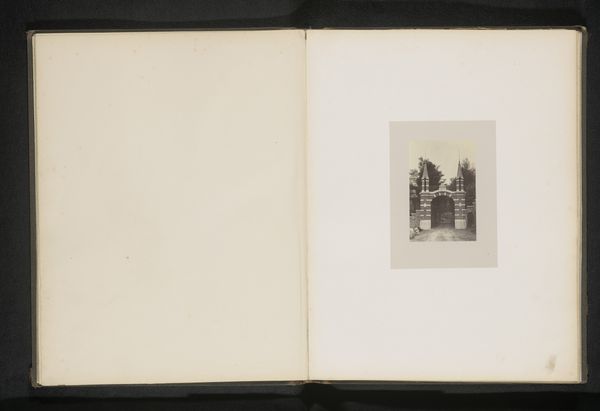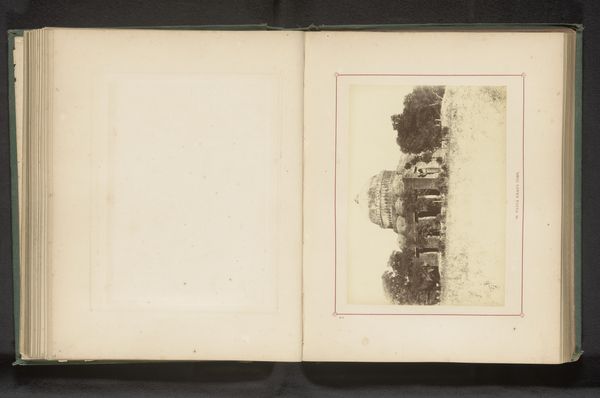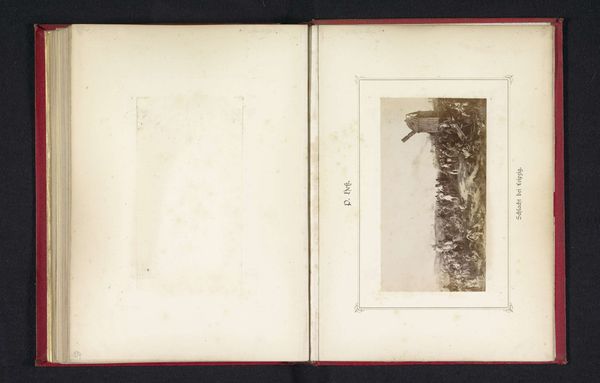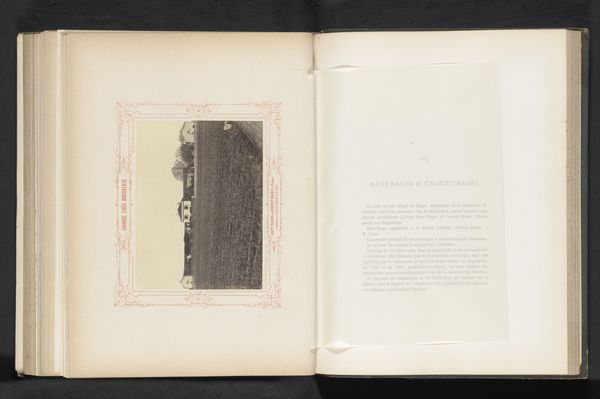
Fotoreproductie van een schilderij, voorstellende een kudde schapen langs een poel before 1878
0:00
0:00
anonymous
Rijksmuseum
#
aged paper
#
homemade paper
#
paper non-digital material
#
paperlike
#
paper texture
#
fading type
#
folded paper
#
thick font
#
letter paper
#
paper medium
Dimensions: height 108 mm, width 161 mm
Copyright: Rijks Museum: Open Domain
Curator: This photographic reproduction, dating from before 1878, depicts a painting of a flock of sheep by a pool. It resides here in the Rijksmuseum collection. Editor: It’s aged beautifully. The faded sepia tones give it an incredible warmth. It's like gazing back through time at a rural scene, softened by years, by material transformation. The very paper whispers stories. Curator: Exactly. It's presented within the leaves of an album. Think of the layers of production here—the original painting, this photographic copy, the paper it's printed on, the very album made to house and showcase it! What were the economic drivers influencing the distribution of imagery like this? Editor: I’m immediately drawn to that aged paper quality you mentioned – its fibrous texture almost tangible despite the fact that we’re looking at a digitized representation of it. Homemade paper it looks like... the materials would certainly speak to their own period of social production. Curator: Indeed. Photographic reproductions democratized art ownership. For a burgeoning middle class, unable to afford original paintings, copies like this brought high art into their homes, displayed as a token of their cultivated refinement. The album form itself—a social object—encapsulates trends in collecting, display, and leisure practices during this era. Editor: It almost looks as though the edges of the paper are cut unevenly. You can nearly see, or imagine, how the sheets were perhaps torn with their own hands! The thickness of that old style font catches the eye. How that "thick font," as they say, embodies the time, what it represented... was it purely functional, or did that thick type aspire to elevate the work in ways still relevant for observers now? Curator: A telling observation! These details, often overlooked, reveal so much. The rise of print culture was tied intrinsically to commerce. It would be intriguing to examine further the font used in titles like "I VAR de Marie Handicufen" and inscriptions. Such textual framing controlled perception. What type of industry facilitated this spread of artwork copies? Editor: It is a thought to wonder who engaged in such activities with what specific intents and effects—even if intentions changed between parties! I now sense that such art’s “beauty” or value is not inherently of high value necessarily because "fine artists" created beautiful or intriguing original imagery… but because each involved maker imbued what he made in the larger economic picture of art history. Curator: Precisely. We can discern much when we shift focus toward not only *what* the work portrays, but *how* and *why* it came into existence, as a fabricated item made from manufactured media, set down in the world and intended to carry onward. Editor: Looking closer reveals that that album it rests on shows slight folds, some slight imperfections and flaws on it which means it endured many owners throughout the age as well as many conditions it may be left under—all material witnesses to a lived timeline. Curator: Yes! Seeing this work contextualized opens several interesting avenues of exploration related to production methods and shifting socio-cultural values and functions surrounding art imagery back then.
Comments
No comments
Be the first to comment and join the conversation on the ultimate creative platform.
